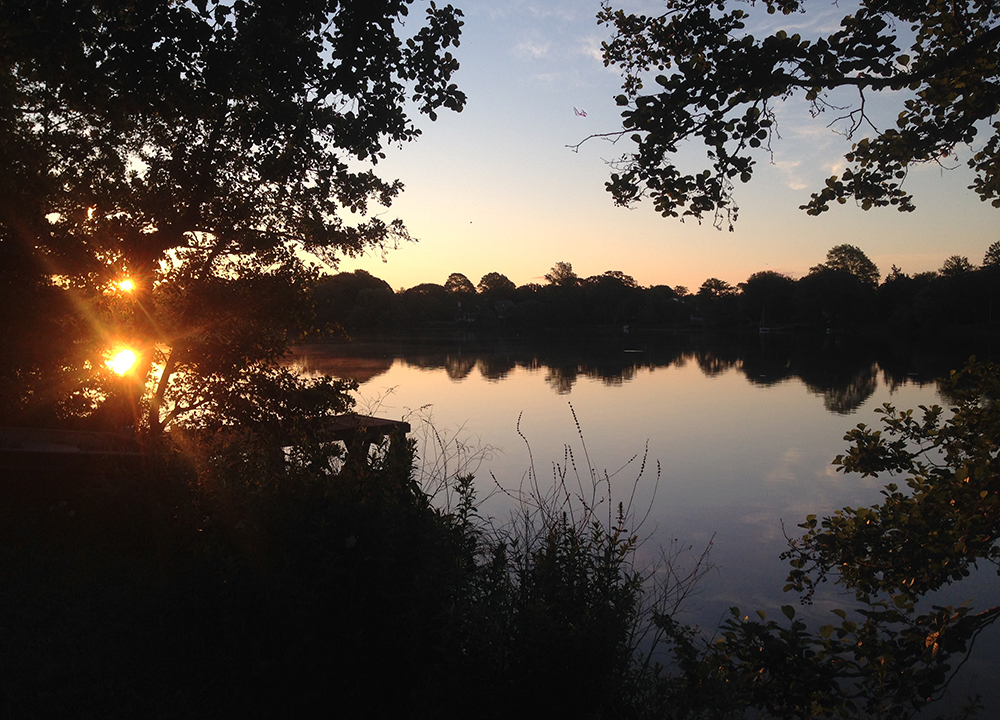The Big Picture
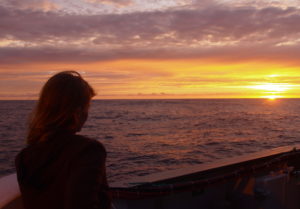 My research addresses questions that are central to the nature and extent of life on Earth in one of its least explored corners, the deep ocean. It is focused on microorganisms, who for more than three billion years have served as engines of Earth’s biosphere, driving essential biogeochemical cycles that shape planetary habitability. Exploration of the sea over the last 40 years has resulted in astounding discoveries about the extent and diversity of life in the deep ocean, pushing our understanding of the intimate connections between the biosphere and geosphere to the extremes, including the discovery of chemosynthetic ecosystems at hydrothermal vents and active microbes buried in sediments, kilometers beneath the seafloor. In fact, the global ocean comprises Earth’s biggest microbiome, with at least half of the ocean’s microbial biomass occurring beneath the ocean floor. I am especially interested in the intersection of the ocean and the seafloor and how they react with one another to create energy and support microbial life in the deep, dark ocean. We are a sea-going lab, taking advantage of the amazing technological developments in deep submergence assets to probe life in these remote environments, and combine those field opportunities with microbial cultivation, molecular biology, geochemistry, stable isotope experimentation, and modeling.
My research addresses questions that are central to the nature and extent of life on Earth in one of its least explored corners, the deep ocean. It is focused on microorganisms, who for more than three billion years have served as engines of Earth’s biosphere, driving essential biogeochemical cycles that shape planetary habitability. Exploration of the sea over the last 40 years has resulted in astounding discoveries about the extent and diversity of life in the deep ocean, pushing our understanding of the intimate connections between the biosphere and geosphere to the extremes, including the discovery of chemosynthetic ecosystems at hydrothermal vents and active microbes buried in sediments, kilometers beneath the seafloor. In fact, the global ocean comprises Earth’s biggest microbiome, with at least half of the ocean’s microbial biomass occurring beneath the ocean floor. I am especially interested in the intersection of the ocean and the seafloor and how they react with one another to create energy and support microbial life in the deep, dark ocean. We are a sea-going lab, taking advantage of the amazing technological developments in deep submergence assets to probe life in these remote environments, and combine those field opportunities with microbial cultivation, molecular biology, geochemistry, stable isotope experimentation, and modeling.
Microbial Life Beneath the Seafloor
The focus of much of the research in my lab is the largest actively flowing aquifer system on Earth- the fluids circulating through oceanic crust underlying the oceans and sediments. My research program investigates subseafloor microbial ecosystems in the global aquifer to resolve the extent, function, evolutionary dynamics, and biogeochemical implications of a subseafloor biosphere. I help lead the NSF Science and Technology Center for Dark Energy Biosphere Investigations (C-DEBI), whose mission is to explore life beneath the seafloor and make transformative discoveries that advance science, benefit society, and inform and inspire the general public about discoveries in ocean sciences and related disciplines. The bulk of our efforts are currently focused on the cold, oxic basement at a site called North Pond near the mid-Atlantic Ridge. We drilled this site with IODP and installed subseafloor observatories to understand the microbial communities and their impact on biogeochemical cycling.
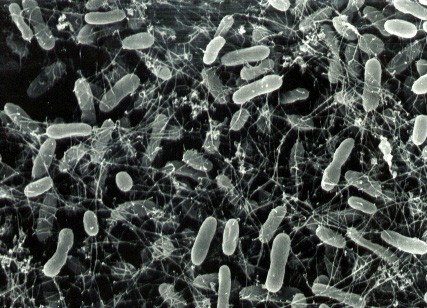
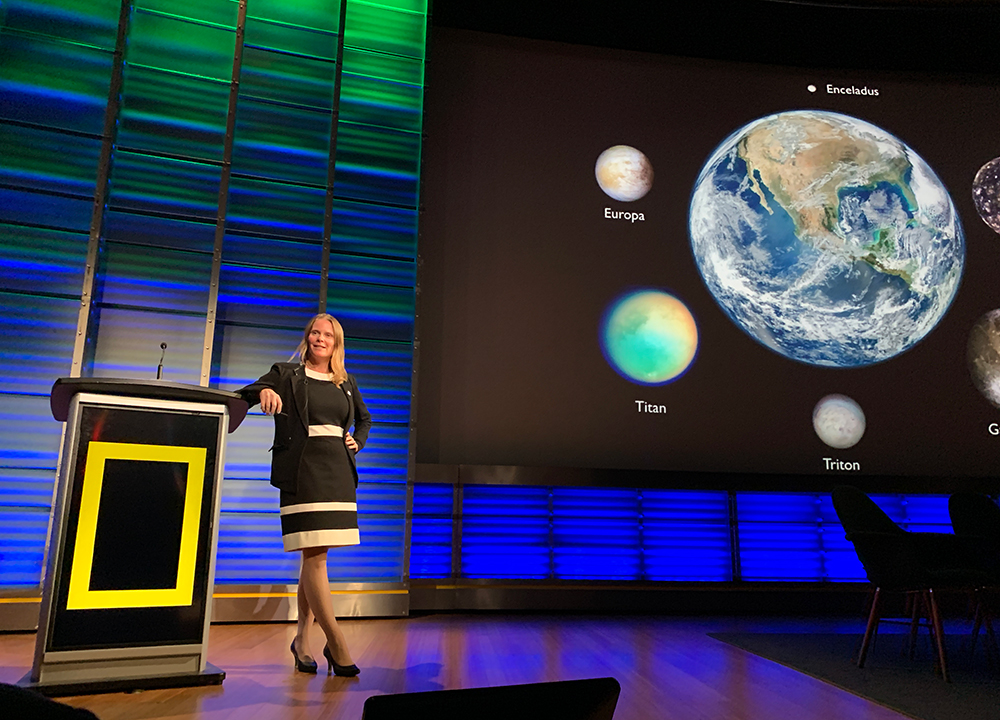
Exploration of Ocean Worlds
I have been fascinated about the prospect for life beyond Earth since I learned about microbes and Astrobiology, an interdisciplinary scientific field concerned with the origins, early evolution, distribution, and future of life in the universe. I’m interested in the history of our own planet, how microbes ruled the Earth for 2 billion years, and how we got from single-cell life at the bottom of the ocean to very complicated mammals! Plus, we now know that not only do oceans cover ~70% of Earth’s surface, but there are abundant oceans in our solar system. These Ocean Worlds include Jupiter’s ice covered moon Europa and Saturn’s moon Enceladus. I’m interested in working with space scientists and oceanographers to find analog sites in Earth’s ocean to help inform our search for life on other Ocean Worlds, and then help design smart missions in the search for life beyond. We are currently partnering with scientists at NASA and a variety of institutions to study Ocean World analogs on Earth to plan for future missions as part of a Systematic Underwater Biogeochemical Science and Exploration Analog (SUBSEA) research program, as well as the newly formed Exploring Ocean Worlds program led at WHOI and supported by NASA.
Hydrothermal Vent Biogeochemistry & Microbial Food Webs
The majority of volcanism on our planet occurs underwater, and at deep-sea hydrothermal vents, microbial communities thrive across geochemical gradients above, at, and below the seafloor. Diffuse fluids leaking out of the crust at vents provide a great access point to the subseafloor, therefore we examine subseafloor microbes in a variety of deep-sea vents around the world. This includes investigations at both well-studied ecosystems, as well as studies of completely novel and unexplored systems. The lab has worked at the world’s deepest known hydrothermal vents (Mid-Cayman Rise), active mid-ocean ridges (Axial Seamount), arc volcanoes (Mariana Arc), back-arc spreading centers (Mariana Back Arc), and hotspot volcanoes (Lōihi Seamount). We don't only study microbes, though. Recently we have expanded our work to include things that kill microbes, like protistan grazers and viruses. We are also interested in the tools needed to study the deep sea and have lots of fun working with engineers to figure out how to study tiny life at the bottom of the ocean.
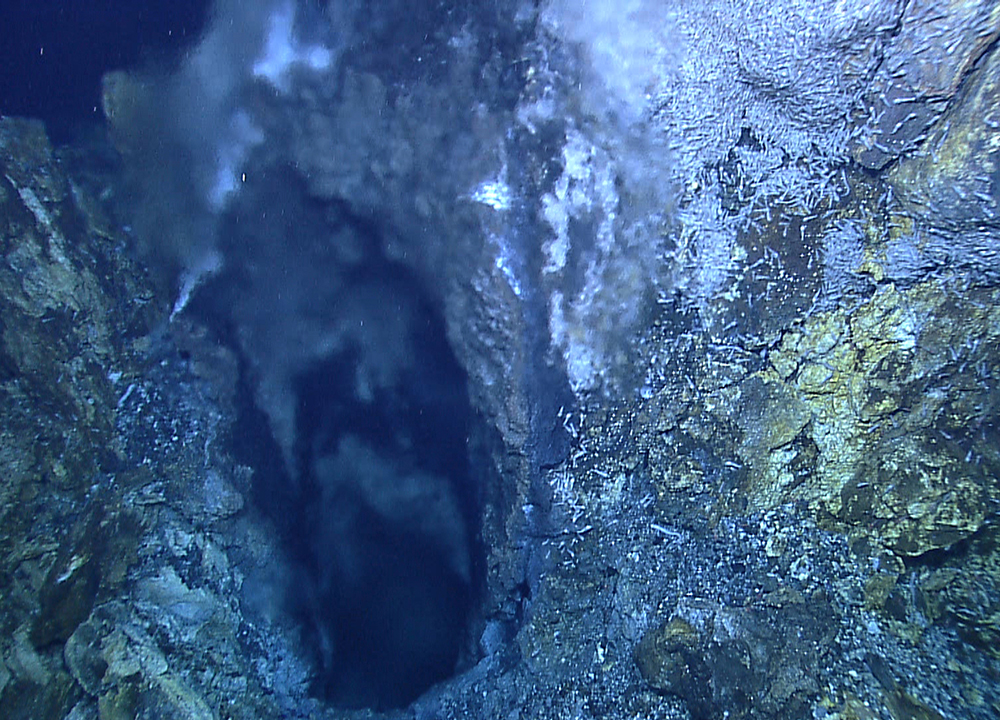
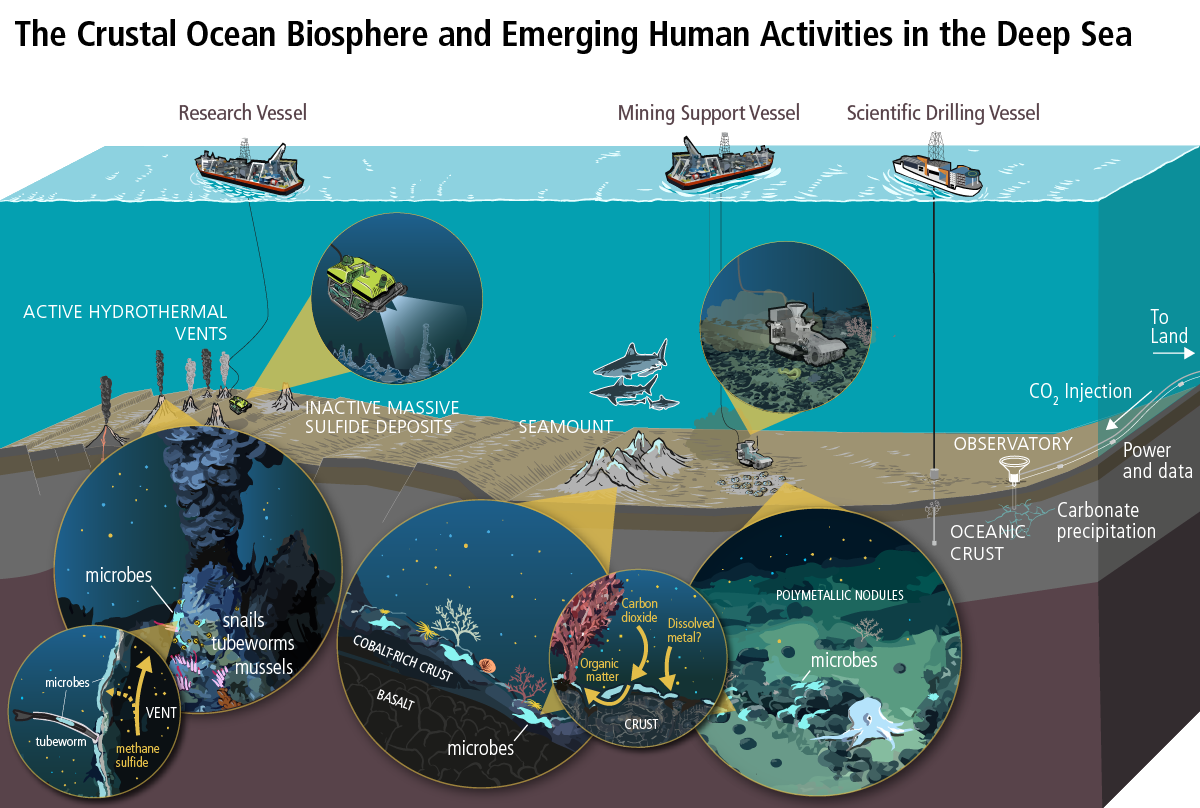
Crustal Ocean Biosphere: Ecosystem Services & Management
The rapid development of industrial-scale tools for mining of deep seafloor mineral/crustal deposits has outpaced the scientific understanding of the environmental impacts of this activity, which could rival or exceed in scale the impacts of deep-sea fishing. Likewise, there is accelerating interest in carbon sequestration in oceanic crust as a strategy to mitigate climate change, but short- and long-term effects are poorly understood. We need to accelerate scientific understanding of deep-sea crustal ecosystems and their resilience to inform decision making, prevent serious harm, and provide benefit to society. However, we are hampered by limited deep-sea research and monitoring assets, a relatively small community of scientists focused on these questions, and data access issues. I am part of a new (2021) NSF program called COBRA- the Crustal Ocean Biosphere Research Accelerator. The goal of COBRA is to generate new knowledge and inform decision-making relating to emergent industrial uses of the deep ocean, such as deep-sea mining and subseafloor carbon sequestration, and to decrease the likelihood of serious harm to the deep sea while maintaining the broad benefits that society currently enjoys.
Microbes of Cape Cod
Cape Cod is beautiful and full of interesting marine and aquatic ecosystems, and I like to study them. While investigations of coastal ponds and deep subseafloor crustal fluids may appear to be disconnected, in all my research I seek to discover fundamental principles that underlie the function of microbial ecosystems to understand how these communities orchestrate processes critical to life in water. I have also found that combining local field and modeling approaches with my subseafloor emphasis has broadened and strengthened my microbial research, especially by having a local field site with easy access for temporal and spatial sampling that provides opportunities for developing more quantitative frameworks for predicting microbial biogeochemistry. Right now we are working on the connectivity of microbial food webs using (Chemostat experiments) as well as studying the microbial ecology and biogeochemistry of a very cool meromictic pond in Falmouth, Siders Pond.
